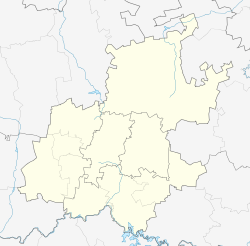Blairgowrie | |
|---|---|
| Coordinates: 26°06′59″S28°00′34″E / 26.11639°S 28.00944°E | |
| Country | South Africa |
| Province | Gauteng |
| Municipality | City of Johannesburg |
| Main Place | Randburg |
| Established | 1928 |
| Area | |
• Total | 4.19 km2 (1.62 sq mi) |
| Population (2011) [1] | |
• Total | 12,049 |
| • Density | 2,900/km2 (7,400/sq mi) |
| Racial makeup (2011) | |
| • Black African | 24.5% |
| • Coloured | 3.1% |
| • Indian/Asian | 9.1% |
| • White | 61.6% |
| • Other | 1.7% |
| First languages (2011) | |
| • English | 71.0% |
| • Afrikaans | 9.5% |
| • Zulu | 4.3% |
| • Tswana | 2.9% |
| • Other | 12.3% |
| Time zone | UTC+2 (SAST) |
| Postal code (street) | 2194 |
Blairgowrie is a suburb of Randburg, South Africa situated in Region B of the City of Johannesburg Metropolitan Municipality South Africa. Named after the town of Blairgowrie in Scotland, the suburb is Johannesburg's second-largest by land area.
The suburb has an active community association called the Blairgowrie Community Association. [2]

